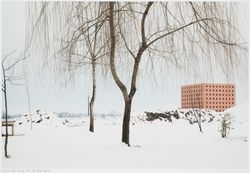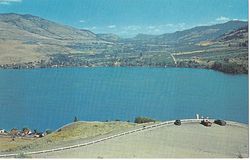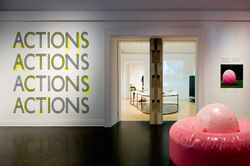archives
Niveau de description archivistique:
Fonds
AP186
Résumé:
The Cloud 9 Villa Nurbs project records,1990s-2013, document the firm’s Villa Nurbs project, a private residence in Empuriabrava (Costa Brava), Spain. The archive consists of the firm’s total born-digital archive for the project, as well as physical materials in a number of formats, including drawings, textual records, slides, presentation materials, photographs, paintings, protoypes, material samples, and models.
1990s-2013
Documents d’archives de Cloud 9 pour le projet Villa Nurbs
Actions:
AP186
Résumé:
The Cloud 9 Villa Nurbs project records,1990s-2013, document the firm’s Villa Nurbs project, a private residence in Empuriabrava (Costa Brava), Spain. The archive consists of the firm’s total born-digital archive for the project, as well as physical materials in a number of formats, including drawings, textual records, slides, presentation materials, photographs, paintings, protoypes, material samples, and models.
archives
Niveau de description archivistique:
Fonds
1990s-2013
Luigi Ghirri / Aldo Rossi : Des choses qui ne sont qu’elles-mêmes est conçu comme un dialogue visuel entre deux figures majeures de l’art et de la culture de l’Italie contemporaine. Cet échange entre le photographe et l’architecte est placé sous le signe d’une profonde affinité, qui découle de leur attrait commun pour une région – la plaine padane du nord de l’Italie – et(...)
Salle octogonale
21 août 1996 au 24 novembre 1996
Luigi Ghirri / Aldo Rossi : des choses qui ne sont qu'elles-mêmes
Actions:
Description:
Luigi Ghirri / Aldo Rossi : Des choses qui ne sont qu’elles-mêmes est conçu comme un dialogue visuel entre deux figures majeures de l’art et de la culture de l’Italie contemporaine. Cet échange entre le photographe et l’architecte est placé sous le signe d’une profonde affinité, qui découle de leur attrait commun pour une région – la plaine padane du nord de l’Italie – et(...)
Salle octogonale
Ben Bradley présente comment lautomobile a influencé la manière dont les Canadiens ont fait lexpérience de leur pays cours du XXe siècle. Alors que des millions de personnes sont parties à la rencontre du Canada à travers le voyage automobile, elles ont aussi donné forme aux endroits quelles ont traversés, par leurs habitudes de visite, leurs goûts et leurs mouvements.(...)
Théâtre Paul-Demarais Mot(s)-clé(s):
Canada, Le temps presse, environnement, Bradley, halte-routière, roadside
23 février 2017, 18h
Faire du Canada une halte-routière
Actions:
Description:
Ben Bradley présente comment lautomobile a influencé la manière dont les Canadiens ont fait lexpérience de leur pays cours du XXe siècle. Alors que des millions de personnes sont parties à la rencontre du Canada à travers le voyage automobile, elles ont aussi donné forme aux endroits quelles ont traversés, par leurs habitudes de visite, leurs goûts et leurs mouvements.(...)
Théâtre Paul-Demarais Mot(s)-clé(s):
Canada, Le temps presse, environnement, Bradley, halte-routière, roadside
archives
Niveau de description archivistique:
Fonds
AP176
Résumé:
Karl Chu X PHYLUM project records, 1998-2014 (predominant 1998-2002), documents the development and design process of Chu’s project X PHYLUM. The archive consists exclusively of original born-digital material.
1998-2014
Documents d’archives de Karl Chu pour le projet X Phylum
Actions:
AP176
Résumé:
Karl Chu X PHYLUM project records, 1998-2014 (predominant 1998-2002), documents the development and design process of Chu’s project X PHYLUM. The archive consists exclusively of original born-digital material.
archives
Niveau de description archivistique:
Fonds
1998-2014
archives
Niveau de description archivistique:
Collection
Collection Rohault de Fleury
CI001
Résumé:
The Rohault de Fleury collection documents the work of three generations of French architects, Hubert, his son Charles, and his grandson Georges, spanning from the early 18th to late 19th century. The collection is extremely varied encompassing both private and government commissions and including domestic work, institutional buildings, commercial buildings, urban planning, and student work from both the École des beaux-arts and the École polytechnique, and archaeological studies. Stylistically, the projects incorporate the two dominant contemporary directions in French architecture - functionalism as advocated by Jean-Nicolas-Louis Durand and the classicism of the École des beaux-arts.
1717-[1884]
Collection Rohault de Fleury
CI001
Résumé:
The Rohault de Fleury collection documents the work of three generations of French architects, Hubert, his son Charles, and his grandson Georges, spanning from the early 18th to late 19th century. The collection is extremely varied encompassing both private and government commissions and including domestic work, institutional buildings, commercial buildings, urban planning, and student work from both the École des beaux-arts and the École polytechnique, and archaeological studies. Stylistically, the projects incorporate the two dominant contemporary directions in French architecture - functionalism as advocated by Jean-Nicolas-Louis Durand and the classicism of the École des beaux-arts.
archives
Niveau de description archivistique:
Collection 1
1717-[1884]
Projet
AP198.S1.1997.PR02
Description:
Project records document the design process for OCEAN North’s competition entry for the Jyväskylä Music and Arts Centre in 1997. The project was titled Terra Cultura by OCEAN North. The international competition called to create a multi-usage space that would include a venue for the symphonic orchestra, a music school, exhibition spaces, and the possibility to host a variety of small cultural events in the Finnish city of Jyväskylä. The proposed site is in the center of the town, across the street from the Jyväskylä city church and its park, and nearby buildings designed by Alvar Aalto. OCEAN North’s concept presents a topological surface as an extension of the surrounding urban scape with two masses that would host the formal functions of the building (concert hall, music school, exhibition halls). The two volumes, or raised blocks, are divided along a diagonal elevated space, which is the extension of the ground’s topological surface filled and dubbed “Liquid Flow Space” by the design team. In their interview with Greg Lynn, Johan Bettum and Kivi Sotamaa mentioned that the idea for Jyväskylä was that it was a cloud. Digital files, in particular, show the process to achieve the projected design. Drawings provide views of streamed particles and of resulting peels. They also include plans, elevations and axonometric views of the structure. Most files are raster or vector images, likely saved from CAD software. A few files are in CAD formats such as Microstation, 3D Studio and form*Z. Digital files also present sine wave analysis and resulting charts for each component of the program. The analysis and charts present the relationships between various components of the building’s program such as the Art Museum, the Concert Halls, the technical space, and the Common facilities. These files are raster images and spreadsheets. Photographs of the site in Jyväskylä and of models built by OCEAN North were digitized and are included with the digital working files. Physical drawings are chiefly floor plans for the building, but also include sections and sketches. Finally, project files include photographic prints of two built models. One of these models, a small model of the conceptual masses of the building structure, is itself in the archive. Photographs show the model in the context of a city scape model. The second model, not part of the archive at CCA, was built at a bigger scale and was an intricate cardboard and wooden stick structure. Sources: Softspace: from a representation of form to a simulation of space, Edited by Sean Lally and Jessica Young. London, New York: Routledge, 2007. Greg Lynn, ed. Archaeology of the Digital 17: OCEAN North, Jyväskylä Music and Arts Centre, Montréal: Canadian Centre for Architecture, 2017. ePub.
1997
Terra Cultura – Jyväskylä Music and Arts Centre, international competition entry
Actions:
AP198.S1.1997.PR02
Description:
Project records document the design process for OCEAN North’s competition entry for the Jyväskylä Music and Arts Centre in 1997. The project was titled Terra Cultura by OCEAN North. The international competition called to create a multi-usage space that would include a venue for the symphonic orchestra, a music school, exhibition spaces, and the possibility to host a variety of small cultural events in the Finnish city of Jyväskylä. The proposed site is in the center of the town, across the street from the Jyväskylä city church and its park, and nearby buildings designed by Alvar Aalto. OCEAN North’s concept presents a topological surface as an extension of the surrounding urban scape with two masses that would host the formal functions of the building (concert hall, music school, exhibition halls). The two volumes, or raised blocks, are divided along a diagonal elevated space, which is the extension of the ground’s topological surface filled and dubbed “Liquid Flow Space” by the design team. In their interview with Greg Lynn, Johan Bettum and Kivi Sotamaa mentioned that the idea for Jyväskylä was that it was a cloud. Digital files, in particular, show the process to achieve the projected design. Drawings provide views of streamed particles and of resulting peels. They also include plans, elevations and axonometric views of the structure. Most files are raster or vector images, likely saved from CAD software. A few files are in CAD formats such as Microstation, 3D Studio and form*Z. Digital files also present sine wave analysis and resulting charts for each component of the program. The analysis and charts present the relationships between various components of the building’s program such as the Art Museum, the Concert Halls, the technical space, and the Common facilities. These files are raster images and spreadsheets. Photographs of the site in Jyväskylä and of models built by OCEAN North were digitized and are included with the digital working files. Physical drawings are chiefly floor plans for the building, but also include sections and sketches. Finally, project files include photographic prints of two built models. One of these models, a small model of the conceptual masses of the building structure, is itself in the archive. Photographs show the model in the context of a city scape model. The second model, not part of the archive at CCA, was built at a bigger scale and was an intricate cardboard and wooden stick structure. Sources: Softspace: from a representation of form to a simulation of space, Edited by Sean Lally and Jessica Young. London, New York: Routledge, 2007. Greg Lynn, ed. Archaeology of the Digital 17: OCEAN North, Jyväskylä Music and Arts Centre, Montréal: Canadian Centre for Architecture, 2017. ePub.
Project
1997
Des architectes, des artistes et des collectifs en provenance de plusieurs pays redéfinissent des activités en apparence anodines comme le jardinage, le recyclage, le jeu ou la marche. Confrontées aux normes de comportement urbain communément admises, leurs actions vont parfois jusqu’à défier les prescriptions de la loi. Les groupes ou les individus mis en scène dans(...)
Salles principales
26 novembre 2008 au 19 avril 2009
Actions : comment s’approprier la ville
Actions:
Description:
Des architectes, des artistes et des collectifs en provenance de plusieurs pays redéfinissent des activités en apparence anodines comme le jardinage, le recyclage, le jeu ou la marche. Confrontées aux normes de comportement urbain communément admises, leurs actions vont parfois jusqu’à défier les prescriptions de la loi. Les groupes ou les individus mis en scène dans(...)
Salles principales
né numérique
ARCH286060
Description:
Most common file formats: AutoCAD Drawing
2001
Calgari - Barcelona
Actions:
ARCH286060
Description:
Most common file formats: AutoCAD Drawing
né numérique
2001
né numérique
ARCH286099
Description:
Most common file formats: AutoCAD Drawing
2004
CD labelled "182: Polideportivo Molina-Murcia, Concurso: movimiento de tierras: zonificacióna nueva"
Actions:
ARCH286099
Description:
Most common file formats: AutoCAD Drawing
né numérique
2004
né numérique, photographies
AP207.S2.SS07.017
Description:
Most common file formats: Windows Bitmap
1980 - 1993
Selection of images for exhibition catalogue, Ettore Sottsass sr. Architetto
Actions:
AP207.S2.SS07.017
Description:
Most common file formats: Windows Bitmap
né numérique, photographies
1980 - 1993


